 |
THE JESENÍKY (Hrubý Jeseník)
Location
The Jeseníky rank among the most beautiful and purest mountain ranges of the Czech Republic. They are located in the northernmost part of Moravia and consist of:
- the Hrubý Jeseník, the core of the whole area
- the Kralický Sněžník upland
- the Nízký Jeseník
In 1969, the Natural Preserve Jeseníky was established. There are four National Nature Reserves there (Praděd, Skřítek Moorland, Rejvíz, Šerák - Keprník) and fifteen nature preserves (e.g.: Filipovické louky, Pod Jelení studánkou, Pstruží potok, Vysoký vodopád, Františkov, Slatinný potok). The whole area is known for its attractive mountainous terrain but it also includes a lot of lowlands. Tourists may expect clean and fresh air and nice views of mountain masses, vast forest complexes, numerous beautiful waterfalls, clear rivers and rich flora. The forests are full of game, but there are also foxes, martens and even mountain goats, wolves and lynxes. The alpine meadows shelter several rare species of flowers, among others Alpine aster, spotted gentian, etc. The forests are also rich in forest fruits like blueberries, cranberries, strawberries, raspberries, blackberries, and in the right season, there is a plenty of various mushrooms there. Nevertheless, the most attractive season in the Jeseníky is the winter, as the mountains offer excellent skiing conditions in various ski centers, the most popular of which is Praděd.
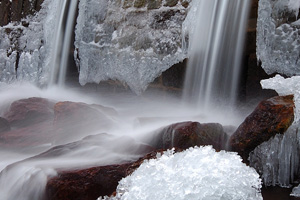
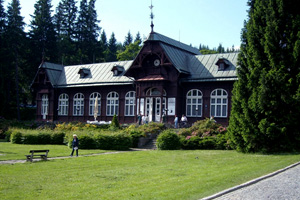
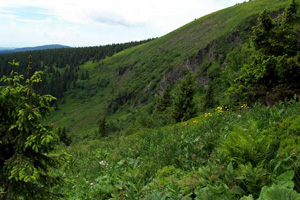
Nature Trails in the Jeseníky
BÍLÁ OPAVA
The valley of the river Bílá Opava is one of the most romantic and beautiful places of the Jeseníky. The 3-kilometer trail is part of the NNR Praděd. It starts near Karlova Studánka and ends under the mountain hut Barborka. The trail leads through a deep valley, with many foot-bridges. One can admire a number of cascades and rapids there, as well as rock formations and waterfalls, the highest of which is 7.9 m high. Within this 40-meter sector, the torrent’s waterfall and subsequent rapids pass the difference of height 16.4 m. The river bed also has unique formations, the so-called giant kettles (dish-shaped depressions with a several-decimeter diameter and depth of several centimeters; they are a result of centuries-long processes of gneiss bottom scour by whirling of water and soil particles). The territory is rich in flora and fauna (e.g. Jeseníky spruce, rhododendron, alpine lady fern, water-ousel). There are 6 stops along the trail.
The trail is very intensive and takes approx. 2 to 3 hours. The tourists must pay a fee at the entrance to the trail, they can also buy information materials there.
The season starts on June 1 and ends on September 30.
REJVÍZ
This nature trail leads through the NNR Rejvíz and is characterized by a moss-land (approx. 6-7 thousand years old) and moss lakes. The trail acquaints the tourists with rare species of plants and animals. Typical moss vegetation grows there, like swamp moss, carnivorous round-leaved sundew, Carpathian birch, etc., and also various animals - northern bat, northern raven, moss ant and a butterfly Palaeno sulphur. There are 2 beautiful moss lakes there - Great and Small Moss Lakes. The Great Moss Lake (1692 m2 in area and 2-3 m deep) can be accessed on a fascine road. The Small Moss Lake is not open to public. There are 5 stops along the trail.
The trail is 3 km long and is not intensive, lasting 1–2 hours. This trail is paid and there is a possibility of buying souvenirs. The season is limited only by the winter.
ČERVENOHORSKÉ SEDLO - ŠERÁK - RAMZOVÁ
Medium-intensive NT, orientated to endangered species of plants and animals and to the formation of upland moors. It starts in the saddleback of Červenohorské sedlo in the direction to Vřesová studánka, and then continues through the National Nature Reserve Šerák - Keprník, with moss-lands full of typical plants. From the peak of Šerák it is possible to descend, on foot or by a rope railway, to the village of Ramzová, one of the most popular ski centers. On the way, the hikers can see northern raven, northern birch mouse, and several times, even brown bear and northern lynx were noted in these parts.
VELKÁ KOTLINA
The valley of Velká kotlina, which belongs to the most important Central European natural locations, is at the top of the Krkonoše–Jeseníky mountain system as to the nature variety and species richness of plants and animals. A diverse mosaic of different ecotopes formed here - from dry sun-heated sidehills to evercold headstreams, from deep, non-freezing humuses to bare rock. This area is full of extraordinarily rich and unique plant and animal associations (e.g. Sudetic dark plantain, Sudetic clove pink, Tartarian hemlock parsley, Alpine aster; endemic butterfly Sudetic satyr, water pipit, or northern birch mouse). European significance of Velká kotlina was brought forward by German botanist Sendner as early as 1840, comparing it to the famous Alpine Gamsgrube.
The trail is of medium intensity and its length is 11 km. The season is limited only by the winter, and the admittance is free.
PASÁK
This 12.5 km long trail starts in Branná, leads through mountain meadows full of plant life and crosses the nature reserve Pasák (system of rock shacks and interesting eroded nubbins). Along the path, there are lovely views of the Králický Sněžník range, and there is also a border fortification built in 1937–1938 to defend the northern border of our country. The Pasák trail leads back to Branná, where there is possibility of visiting Gothic castle Kolštejn, a Renaissance chateau or parish church.
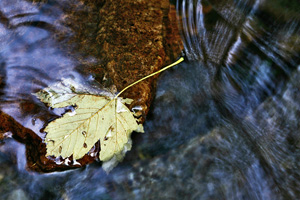
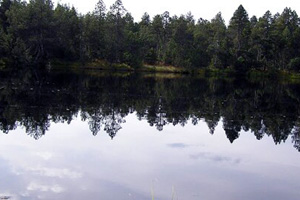
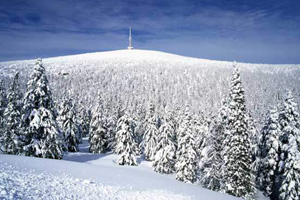
Spa resorts in the Jeseníky
SPA KARLOVA STUDÁNKA
The spa is 7 km away from the hotel and it has the cleanest air in the Czech Republic. They resemble Alpine country towns with a number of cafés and restaurants. Inland as well as foreign tourists come here to cure pulmonary diseases, upper air passages diseases, chronic bronchitis, etc. But there is also possibility of night skiing, and it is a starting point for many hiking and cross-country skiing tracks. Among others, one of the most beautiful foot-trails starts there - nature trail Bílá Opava, leading all the way along the stream of the Bílá Opava river to Praděd - the highest peak of Moravia and Silesia.
STATE SPA BLUDOV
It is primarily a children’s hospital, but also adults cure here movement system diseases. The spa specializes in treatment of renal and urinary tract diseases, diseases and disorders of metabolism and endocrine glands. The character of the spa is rather familiar, with emphasis on close relations with the patients. Spa guests can also play minigolf or volleyball here, or do exercises in the fit-centre or go swimming in the open-air mineral-water pool. Spa Bludov has its own thermal spring with sulphatic-chloride-sodium water with high fluoride content and of radioactive character.
SPA DOLNÍ LIPOVÁ
The spa is located in the Hrubý Jeseník area and all year round it provides services to patients with non-infectious dermal diseases like eczema, psoriasis, occupation-related dermal diseases, acne, etc. The spa also offers recondition stays for the organism recovery.
SPA VELKÉ LOSINY
Spa Velké Losiny is one of the oldest Moravian spas with the longest tradition of treatment of neural and respiratory system diseases. It is the gem of the Šumperk region and tourists can spend their holidays here in the fresh air in the beautiful valley of the river Desná. Many cultural activities are held in the town throughout the year. Lovers of active holidays will find a lot of hiking and cycling tracks around the spa, as well as possibility of fishing in the spa park, and several ski lifts and cross-country tracks.
PRIESSNITZ HEALTH RESORT
The resort was founded by Vincenz Priessnitz, founder of the first hydropathic home in the world. The spa is situated near the town of Jeseník, surrounded with high peaks and constituting the dominant of the surrounding country. Apart from the treatment, the spa also offers accommodation and boarding, symposiums and congresses, possibility of hiking, skiing, tennis playing, fitness and swimming pool.
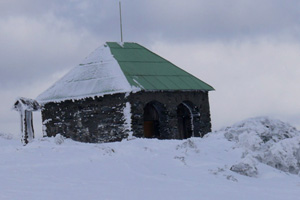
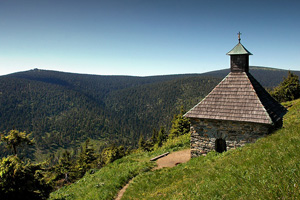
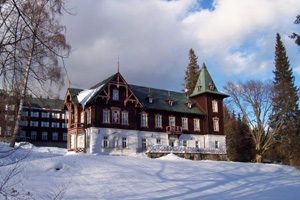
The most interesting places of the Jeseníky
DLOUHÉ STRÁNĚ
Pumped-storage hydro-plant with the output of 650 MW; the upper reservoir is at the top of a peak of the same name in the elevation of 1350 m a.s.l. (the uppermost Czech dam), with the surface area of 8.6 ha (15.4 ha in case of max. filling), level variance of max. 21 m; the lower reservoir on the Divoká Desná river, with 56-meter fill dam, surface area 7.2 ha (16.1 ha, respectively); there are solar cells and three wind-power plants near the upper reservoir.
NÝZNEROV WATERFALLS
Waterfalls on the stream Stříbrný potok; a system of cascades and rapids with the overall height 14 m; the highest levels are 3 m high; created on the hornblende-gabbro rock; relatively high flow rate throughout the year; natural monument.
RÝMAŘOV
10 000 citizens, formerly a mining town with silver mines, later weaving industry, today predominantly civil engineering (manufacture of family houses) and furniture industry; well-preserved baroque architecture (town-hall, chapel V Lipkách); museum with a gallery; proximity of cross-country skiing tracks.
SKŘÍTEK (877 m a.s.l.)
Wide saddleback on the boundary of the Hrubý Jeseník and the Hraběšice highland; important point on the highway from Šumperk to Ostrava; starting point for mountain hikes; the roadhouse is near important cross-country skiing tracks; J. Jílek’s stone sculpture of Troll (Skřítek = Troll in English); NNR Skřítek Moorland - anticlinal moorland of transient type in the Podolský potok spring area; tundra character of the woods; Mountain Rescue Service station.
JELENÍ STUDÁNKA
Lies on the Vysoká hole summit, 1300 m a.s.l.; spring area of Stříbrný potok; head-water of Podolský potok; a stone shelter for tourists going from Skřítek to Praděd was built near the spring.
VŘESOVÁ STUDÁNKA (1313 m n.m.)
A place on the Červená hora hillside; was known for its small church and a tourist hut (demolished in 1888); nowadays, there is only a chapel above the spring with curative effects - at least, a folk-tale tells us so; in 1921, a cloudburst caused an earth slip to the Hučivá Desná valley; gullets are nowadays stabilized by dikes.
KARLOVA STUDÁNKA
Almost 200 years old ferric-carbonic and climatic spa, founded in 1785; treatment of respiratory system diseases, cardio-vascular diseases; springs of ferric mineral water - slightly sulphuric water, with the temperature of 6–7 °C; mainly wooden spa houses, in the Empire style; geological exhibition opposite the hotel Hubertus; artificial waterfall behind the car park “U Huberta”; spa park; starting point for hikes to Praděd and to the Bílá Opava waterfalls; no thoroughfare - parking areas on the town edge.
|
|
|
|
|


